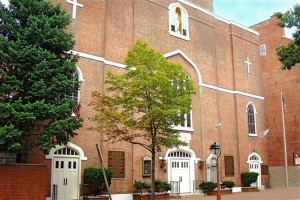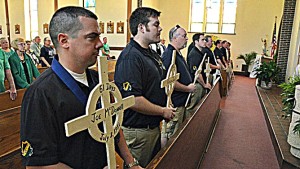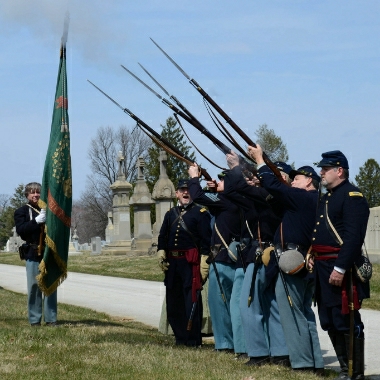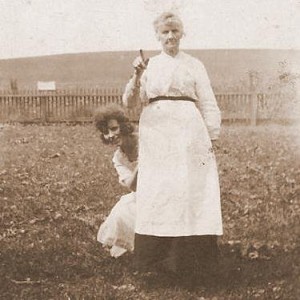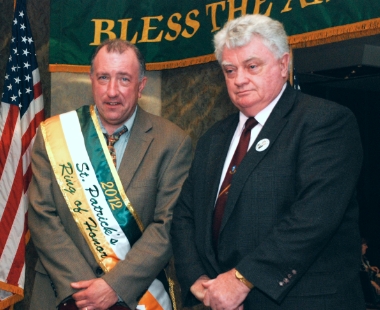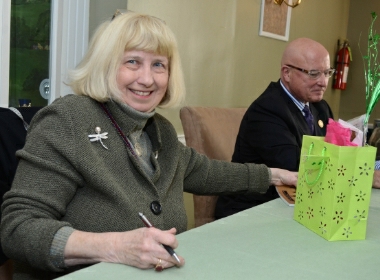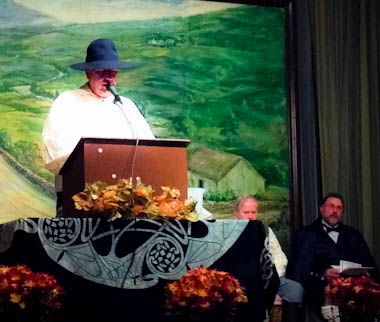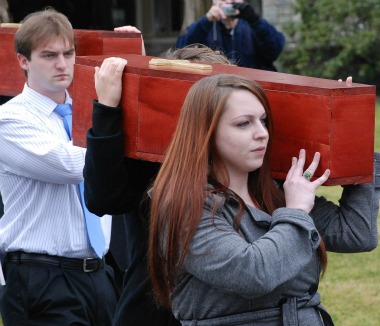For a pastor, every church has its challenges, and its unique rewards. The Rev. Msgr. Paul A. DiGirolamo has been a pastor before, at St. Joan of Arc parish in Kensington, but for the past five years he has overseen the day-to-day running of one of the most treasured churches in Philadelphia, if not the nation. Its cemetery is a who’s who of historical figures, not the least of which is Commodore John Barry—who was born in Ireland’s County Wexford, emigrated to America, and would become known throughout American history as the father of the U.S. Navy.
Old St. Mary’s is marking its 250th anniversary on Sunday, and hosting a Memorial Day weekend observance to celebrate the life of the illustrious Commodore Barry.
Msgr. DiGirolamo is a South Philly native with a master’s degree in history from Villanova. He is also the judicial vicar for the Metropolitan Tribunal of the Archdiocese of Philadelphia, which oversees matrimonial cases. Like any priest, Msgr. DiGirolamo has pastoral responsibilities—masses, baptisms, funerals—but he is keenly aware that the church is also a landmark.
“I might not be dealing with 3,000 families in a large suburban parish,” he says, “but I’m running a smaller operation, and I’m doing it myself. We’re open most of the time—we’re part of the tour.” Administrative skills are required, but, he adds, “the master’s in history helps, too.”
From the outside, Msgr. DiGirolamo observes, Old St. Mary’s can seem unassuming. An entry on history.org describes it best: “The facade of the building is flat and made of brick.” But the listing goes on to say: “The church’s interior, and especially the balcony, is captivating and worth a visit. A revealing slice of religion in early America awaits.”
That’s precisely how Msgr. DiGirolamo believes visitors respond to the worship space of Old St. Mary’s. “First, they are struck by the beauty of the church,” he says. “Given the fact that it reflects different renovations, it is quite beautiful, and no one expects that. On the outside, most people don’t know it is a church. There’s just an added dimension here that a lot of parishes don’t have.”
Sunday offers a unique opportunity to visit Old St. Mary’s. The 250th anniversary observance begins with a commemorative Mass, starting at 11 a.m., and celebrated by Philadelphia Archbishop Charles J. Chaput and Msgr. DiGirolamo. After Mass, a procession led by members of the Philadelphia Emerald Society Pipe Band and the University of Pennsylvania ROTC Honor Guard will make a stop outside the church for a reading at the Commodore Barry Plaque, and will continue on to the commodore’s gravesite, where a wreath laying ceremony will take place.
Several prominent organizations will take part, including Irish societies from the Philadelphia irish Center/Commodore Barry Club, the Commodore Barry Club of Brooklyn, the Society of the Friendly Sons of St. Patrick, and the American Catholic Historical Society.

